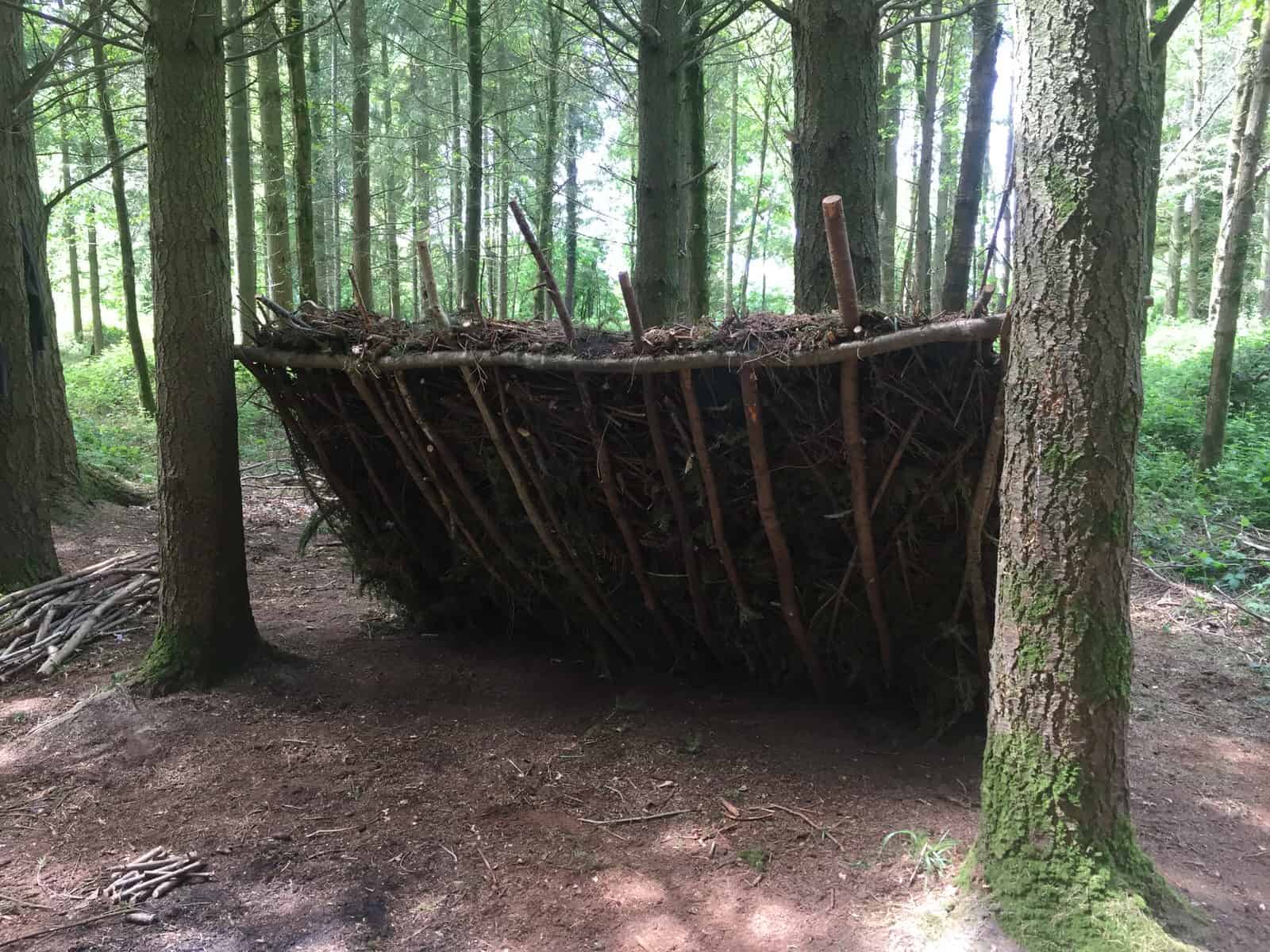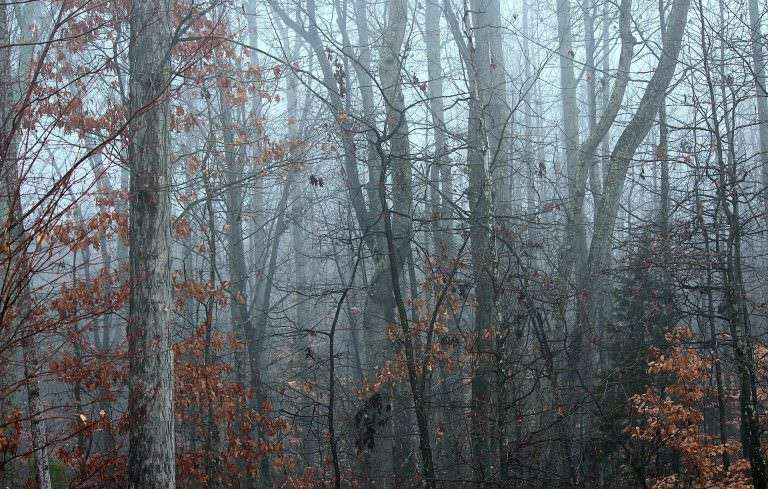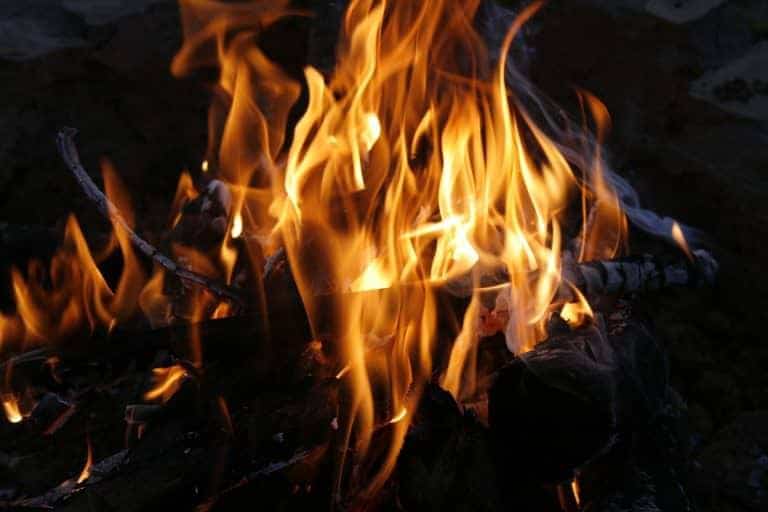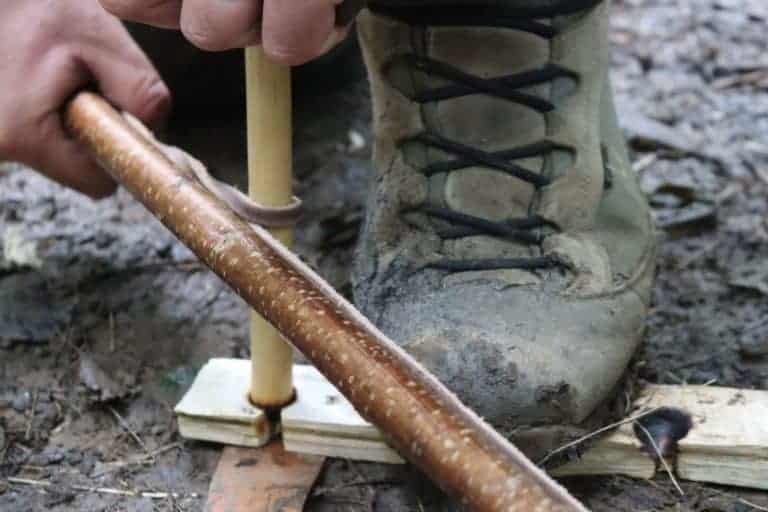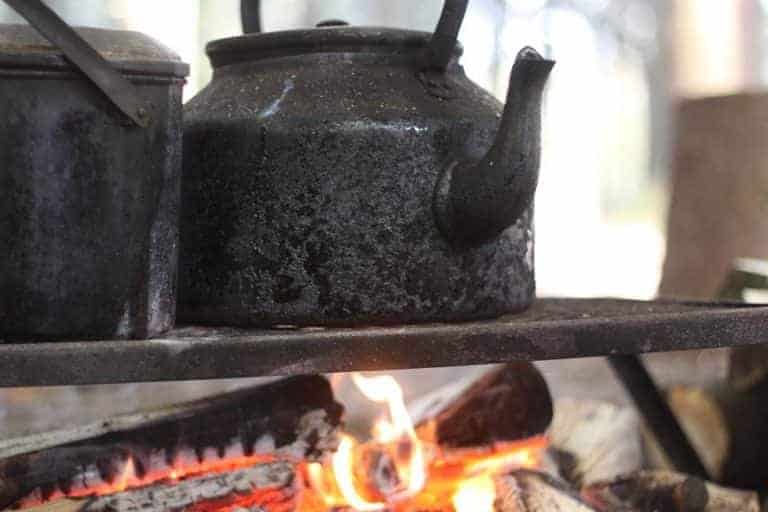Shelter Building In Autumn
When it comes to bushcraft in the UK there are several additional considerations that you need to be aware of before building a shelter in autumn. Not only will it be colder at night and in the morning, additionally, there will also be less green foliage around to use and it is likely to be damper. Read on to discover some key considerations when building a bushcraft shelter in autumn and winter.
Type of shelter
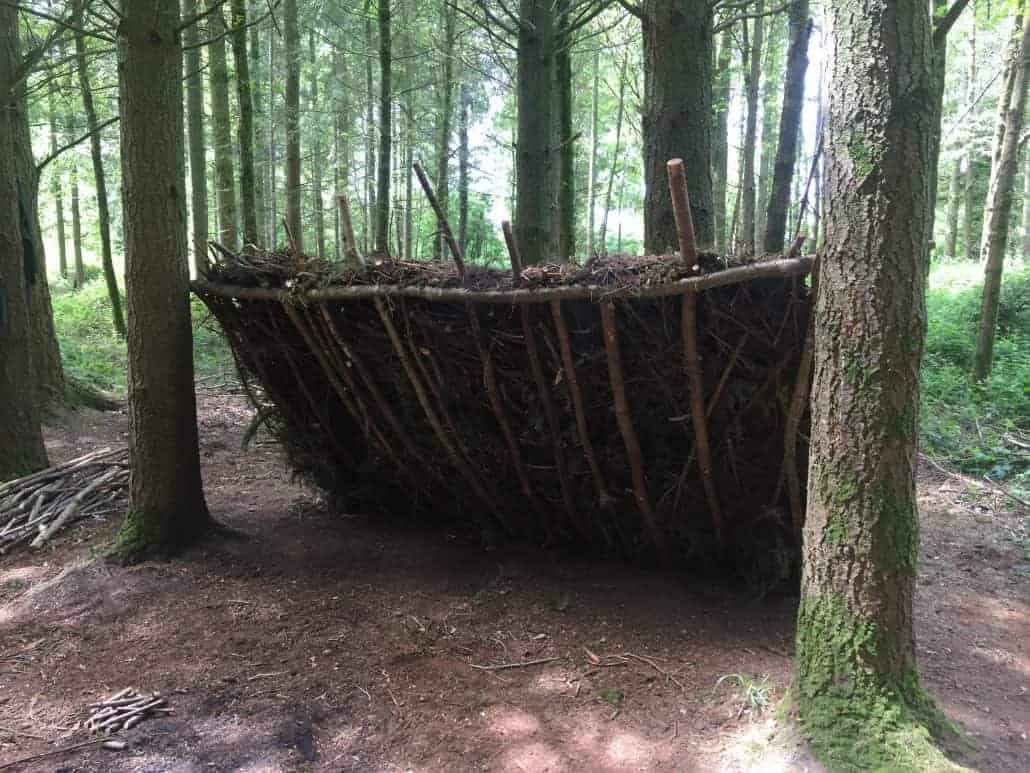
Shelter building can be a long and time-consuming task. It needs to be completed alongside other essentials camp tasks such as creating a fire, stockpiling firewood and sourcing water. In autumn and winter, with daylight hours being limited, it is important to build the shelter that uses energy and resources most economically. One of the shelters best suited to bushcraft in autumn and winter is the lean-to. This type of shelter, along with the correct type of fire, can provide comfort in cold and even sub-zero temperatures.
LEARN FIRE LIGHTING, SHELTER BUILDING, AXE SKILLS AND MORE ON OUR WEEKEND BUSHCRAFT COURSE.
Location and resources
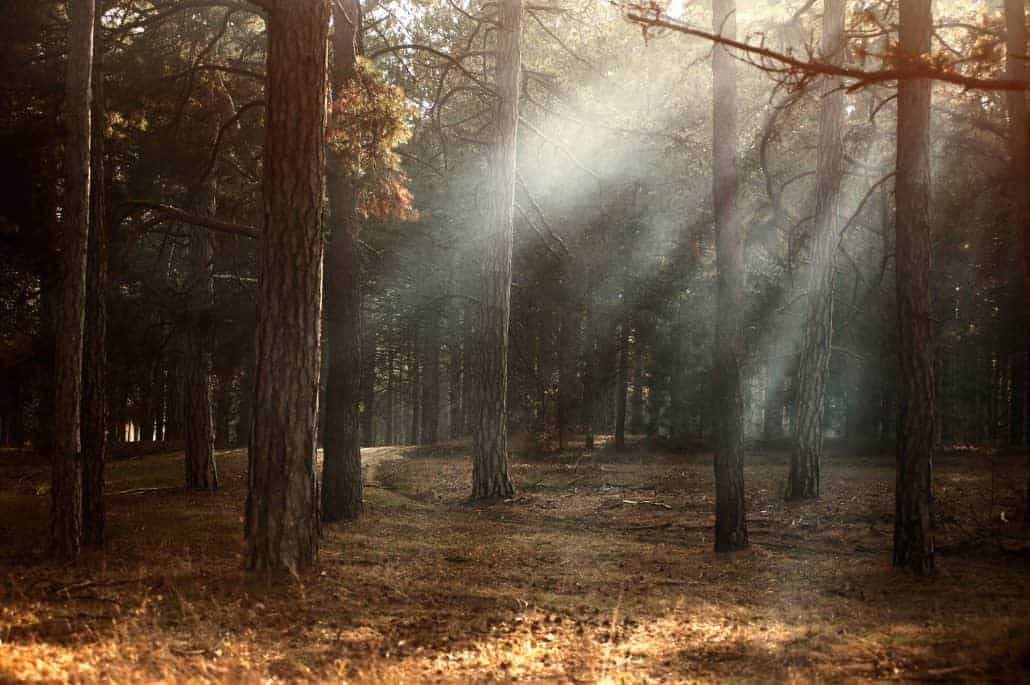
Choosing a suitable location is a cornerstone of any successful bushcraft shelter building exercise, this is even truer in the autumn and winter when materials might be in short supply. A lean-to shelter can require a lot of resources; small trees will need to be felled and split into suitable lengths and more wood will need to be gathered for the fire. While there is the adage ‘wood will warm you twice, once when you collect it and again when you burn it’; you need to be careful not to exhaust yourself as this could have serious consequences, especially in colder weather where hypothermia is a risk. Look for a location that is rich in trees, such as pine or birch and close to a source of water. The dense tree cover of a UK woodland will keep your lean-to shelter relatively free from snowdrift.
LEARN FIRE LIGHTING, SHELTER BUILDING, AXE SKILLS AND MORE ON OUR WEEKEND BUSHCRAFT COURSE.
Tools
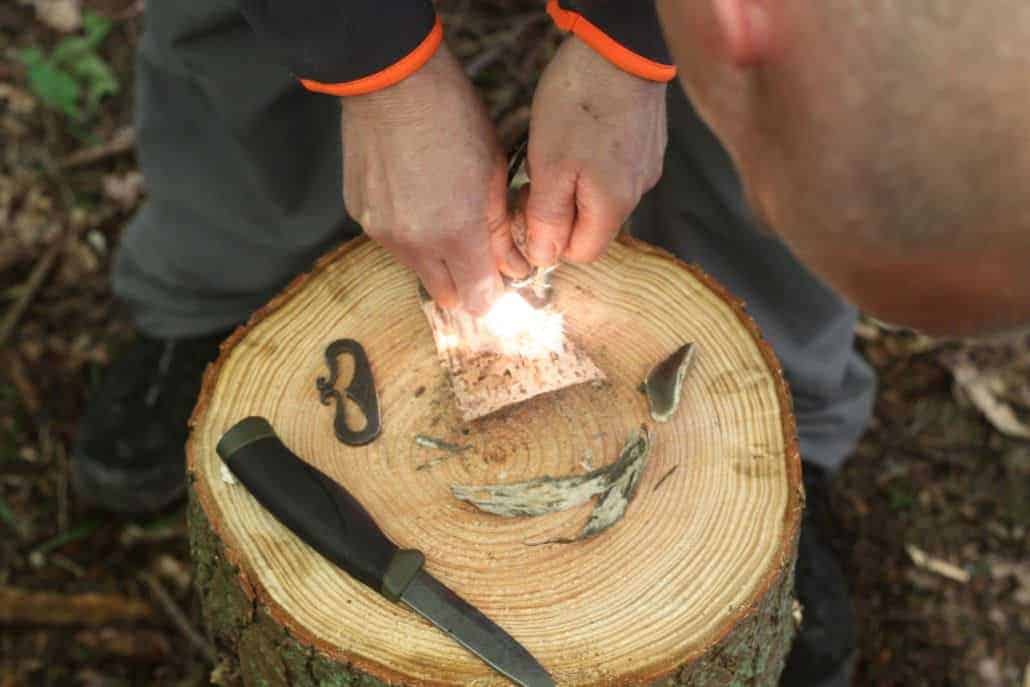
As we previously mentioned lean-to shelters are resource heavy, needing either the felling of several small trees of the cutting to size of fallen dead wood. For these purposes, you’re going to need both a reasonable size bushcraft axe and a hand-held saw, such as a Silky saw or a laplander.
LEARN FIRE LIGHTING, SHELTER BUILDING, AXE SKILLS AND MORE ON OUR WEEKEND BUSHCRAFT COURSE.
Fire
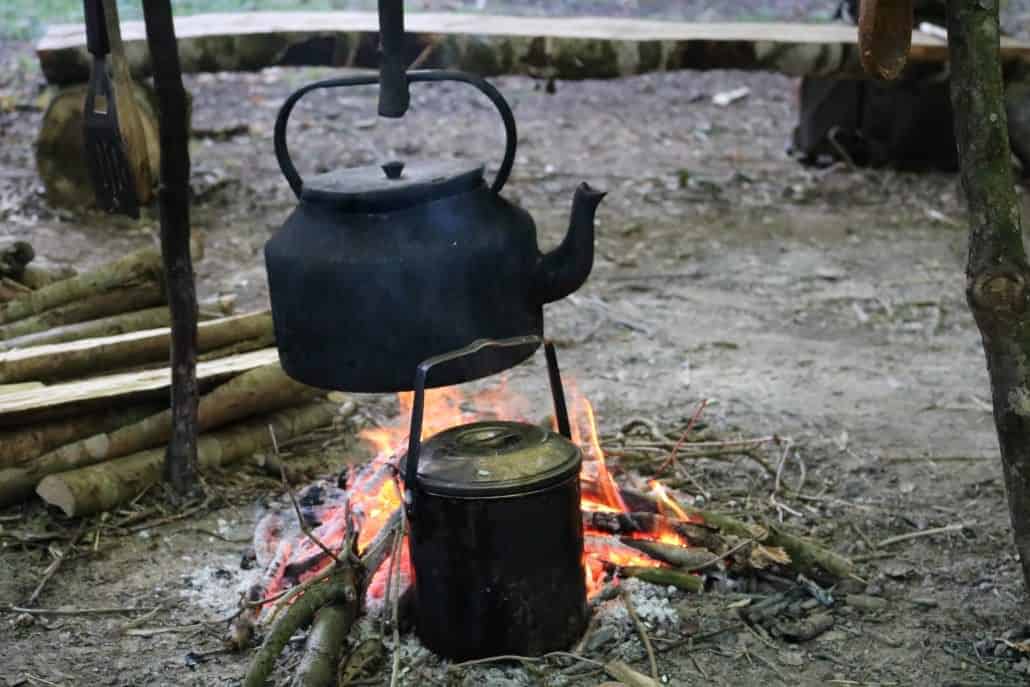
The construction of a lean-to shelter in autumn and winter conditions also requires the construction of an appropriate fire. For warmth in a lean-to shelter, it is hard to beat a long-log fire. The logs that you are using for this fire (once it has been started) should be of a fair size, akin to the thickness of a telegraph pole, so that they will burn through all night. Finding logs of this size will most likely require the felling of standing dead wood. We will be showing you how to build a long log fire in more detail later in the year.
Environmental considerations
One of the often overlooked considerations of building a bushcraft shelter in the autumn, or at any time of the year, is the environmental impact of your shelter. Of course, in a genuine survival situation then this should slide down your list of considerations, however, bushcraft is not about survival. Rather, it is about living in harmony with nature in a relaxed and enjoyable manner. The proficient bushcraft person is at home in the woods, working without haste or panic and in harmony with their materials.
Use what is readily available
With the above in mind, you should consider the environmental impact of building your shelter. Do you need to fell trees or can you use what is to hand? Is there a natural feature which can help you in constructing your shelter? Is the location of your shelter close to any wild flowers or plants that it might damage? Look around you and see the woods as a whole, use what is easily available to help you to achieve your aims.
Kit
Below we have listed a few pieces of kit that are essential for going out into the woods during winter or at any time of the year.
- Fallkniven DC4
 This diamond/ceramic whetstone is perfect for use in the field.
This diamond/ceramic whetstone is perfect for use in the field.
https://www.fallkniven.com/en/knife/dc4/ - Knives
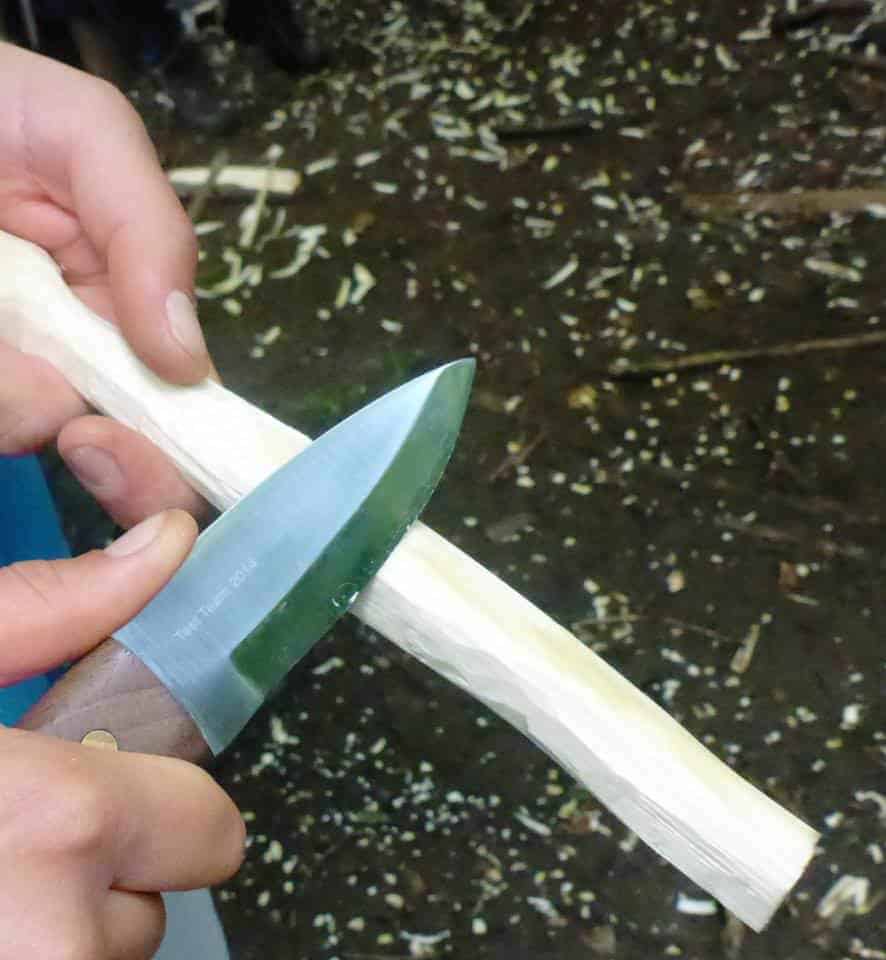
Wildway Bushcraft use Bear Blades.
“Constructed from superb quality D2 steel this knife is ideal for bushcraft and wood crafting. Our most popular knife due to its versatility and functionality, suited to tough daily use in the woods.”
http://bearblades.co.uk/ - Gransfors Bruk Small Forest Axe
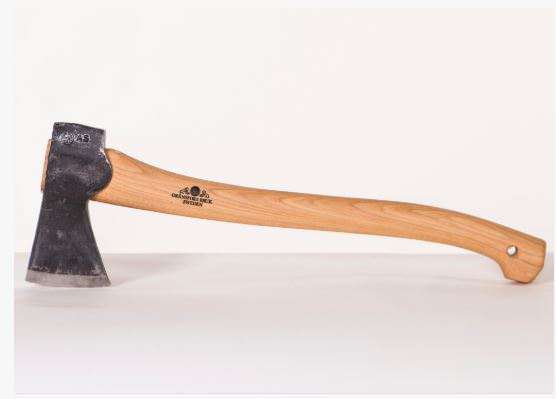
https://www.gransforsbruk.com/en/product/gransfors-small-forest-axe/
Wildway Bushcraft use a small forest axe from Gransfors Bruk. You can find out more information about Gransfors Bruk via the link below.https://www.gransforsbruk.com/en/product/gransfors-small-forest-axe/
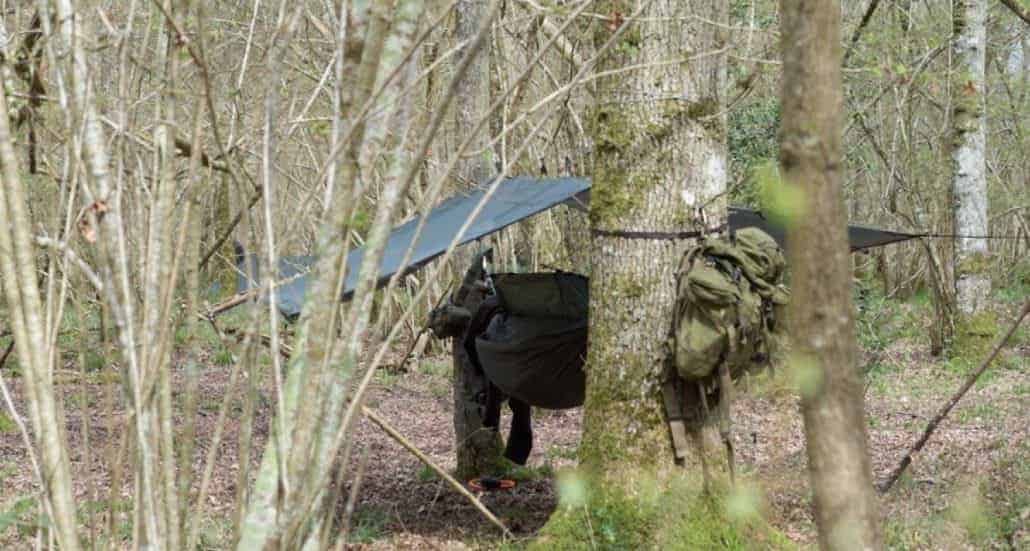 The DD 3×3 Tarp is a classic of the camping world. You can read our review of it here.
The DD 3×3 Tarp is a classic of the camping world. You can read our review of it here. The tarp can be found online via DD Hammocks at the link below.
https://www.ddhammocks.com/
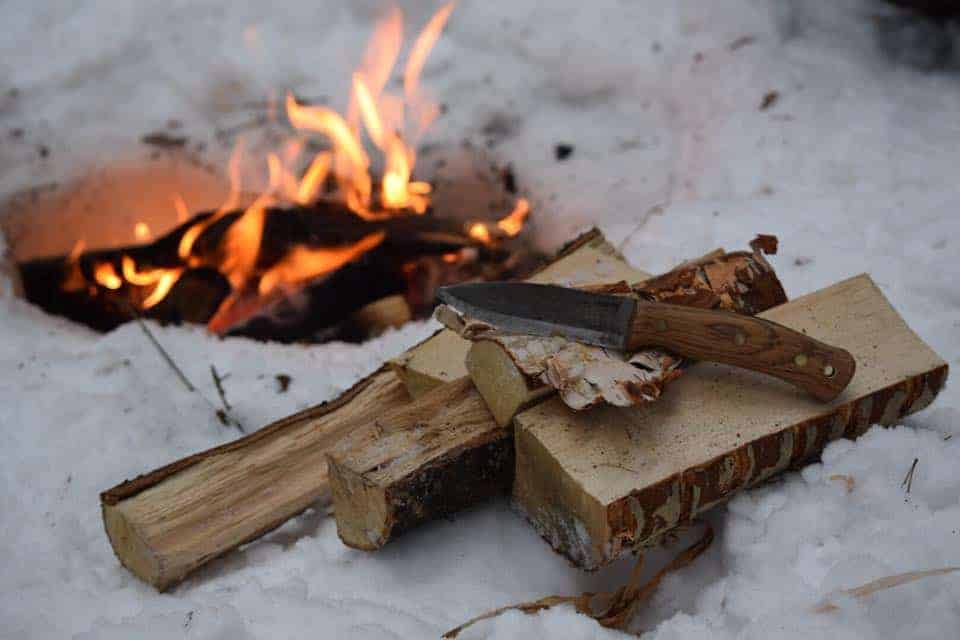 This Swedish Fire Steel from Light My Fire is a great way of causing sparks and igniting your tinder. More reliable than either matches or a lighter you shouldn’t be in the woods without one.
This Swedish Fire Steel from Light My Fire is a great way of causing sparks and igniting your tinder. More reliable than either matches or a lighter you shouldn’t be in the woods without one. http://www.lightmyfire.com/products/products/swedish-firesteel-20.aspx
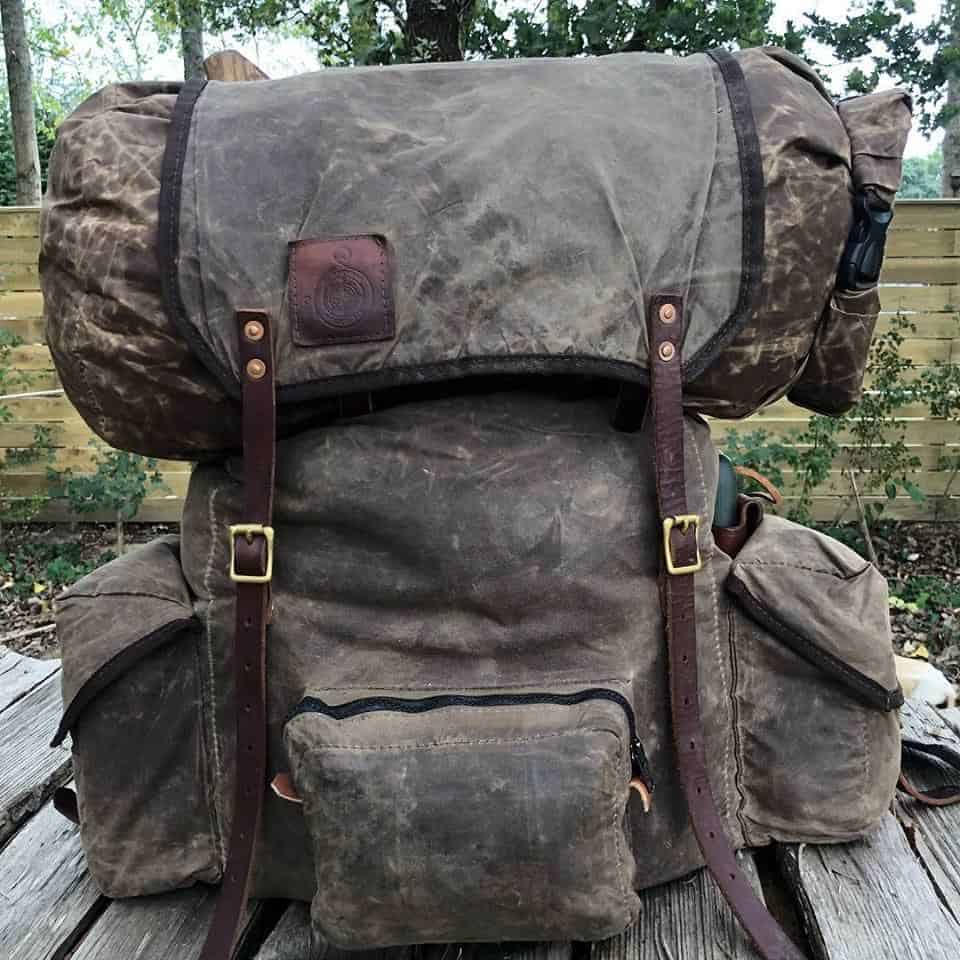
This classic bushcraft pack is hand-made in the UK and mixes a traditional style pack with a modern carrying system.
https://www.journeymanhandcraft.com/product-page/the-journeyman-classic-bushcraft-pack

